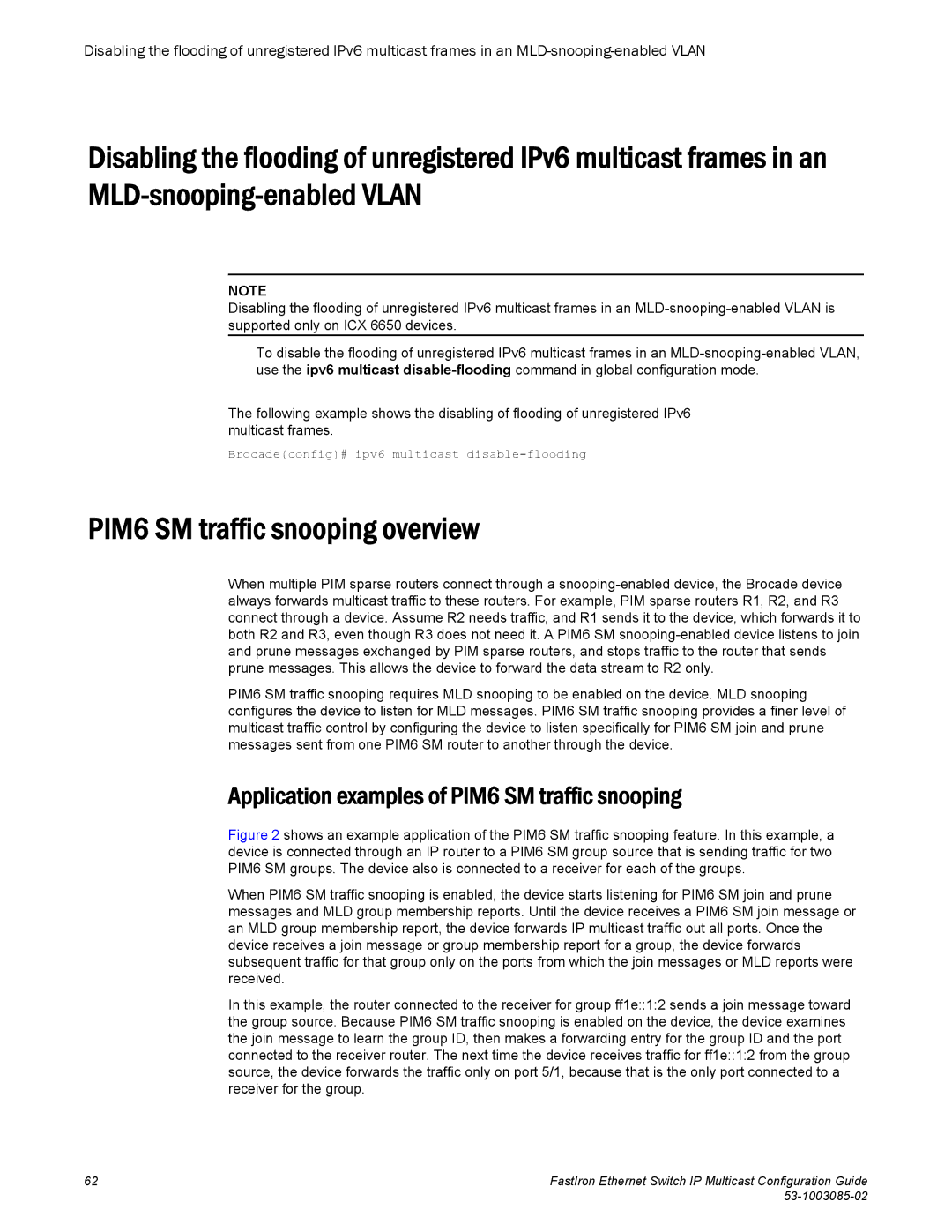
Disabling the flooding of unregistered IPv6 multicast frames in an
Disabling the flooding of unregistered IPv6 multicast frames in an
NOTE
Disabling the flooding of unregistered IPv6 multicast frames in an
To disable the flooding of unregistered IPv6 multicast frames in an
The following example shows the disabling of flooding of unregistered IPv6 multicast frames.
Brocade(config)# ipv6 multicast
PIM6 SM traffic snooping overview
When multiple PIM sparse routers connect through a
PIM6 SM traffic snooping requires MLD snooping to be enabled on the device. MLD snooping configures the device to listen for MLD messages. PIM6 SM traffic snooping provides a finer level of multicast traffic control by configuring the device to listen specifically for PIM6 SM join and prune messages sent from one PIM6 SM router to another through the device.
Application examples of PIM6 SM traffic snooping
Figure 2 shows an example application of the PIM6 SM traffic snooping feature. In this example, a device is connected through an IP router to a PIM6 SM group source that is sending traffic for two PIM6 SM groups. The device also is connected to a receiver for each of the groups.
When PIM6 SM traffic snooping is enabled, the device starts listening for PIM6 SM join and prune messages and MLD group membership reports. Until the device receives a PIM6 SM join message or an MLD group membership report, the device forwards IP multicast traffic out all ports. Once the device receives a join message or group membership report for a group, the device forwards subsequent traffic for that group only on the ports from which the join messages or MLD reports were received.
In this example, the router connected to the receiver for group ff1e::1:2 sends a join message toward the group source. Because PIM6 SM traffic snooping is enabled on the device, the device examines the join message to learn the group ID, then makes a forwarding entry for the group ID and the port connected to the receiver router. The next time the device receives traffic for ff1e::1:2 from the group source, the device forwards the traffic only on port 5/1, because that is the only port connected to a receiver for the group.
62 | FastIron Ethernet Switch IP Multicast Configuration Guide |
|
